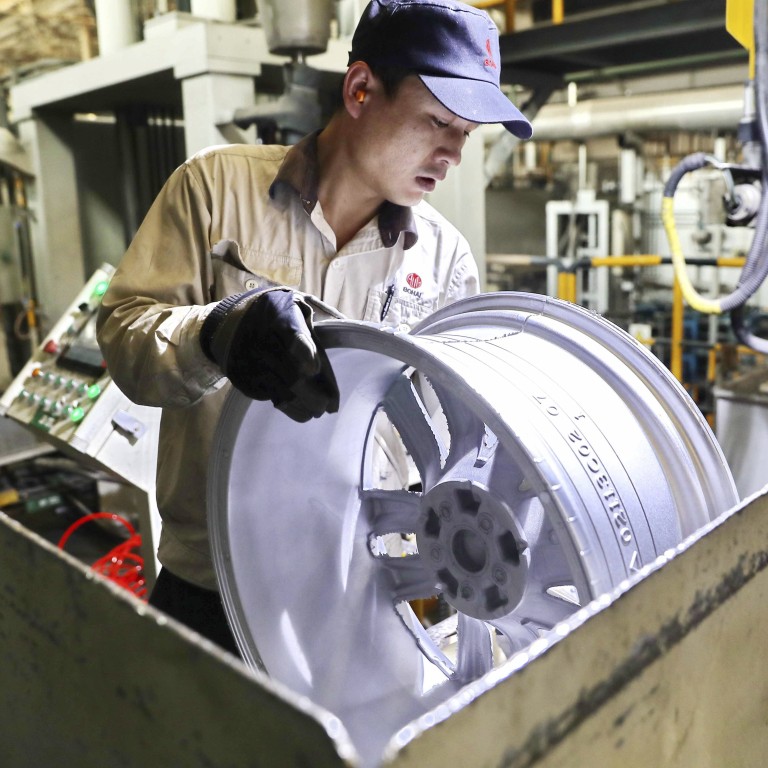
Global recession prophets have misread the US and Chinese economies
- Relax everyone, that looming financial apocalypse just isn’t going to happen. Well, not in 2019 at least
In the last few weeks the warnings have come thick and fast: the world economy is teetering on the edge of a new global recession, and sooner rather than later is going to tip over the edge into the abyss. Happily, the alarm bells are premature.
Other warnings come from less partial observers. And on the face of things, there is considerable evidence to support their views. They note that growth in the world’s three major economies – the United States, China and the euro zone – is slowing at the same time.
What’s more, they point out that by many measures debt levels are at record highs. In the US, for example, corporate debt is now equivalent to 47 per cent of gross domestic product. Every time in the past the ratio has exceeded 43 per cent, a recession has followed in a matter of months.
Now they fear history may be about to repeat. As growth slows, servicing all that debt will become impossible, and the US economy will collapse in a vicious round of default, deleveraging and deflation.
Three reasons to think twice about China’s stock slump
To many pessimists, China is in an even worse plight, with total debt now in excess of 250 per cent of GDP after years of credit-fuelled investment in projects of questionable value.
Some believe the crunch is almost upon us. In the US, they fret that job creation all but ground to a halt in February, after averaging around 200,000 a month for the last eight years.

However, in both economies the fears appear overblown. First, the US: the sampling method used to come up with monthly payroll figures means that roughly once a year, the announced number will overshoot or undershoot by around 120,000. Seen in that light, the 20,000 figure reported for February looks weak, but hardly disastrous.
Meanwhile, other data points look relatively encouraging. In particular, US productivity is growing in line with wages, which is helping to hold down inflation. In turn, modest inflation has allowed the US Federal Reserve to put further interest rate increases on hold.
As US mulls new Plaza Accord, China should learn from Japan’s fate … but not the lesson it thinks
Given that every US recession and major international financial crisis since the early 1970s has been preceded by a sharp rise in real – inflation-adjusted – US interest rates, and that today real rates are only just in positive territory, that’s highly encouraging.
What’s more, it means we don’t have to be too worried about that US corporate debt mountain. With growth and interest rates at current levels, US companies are generating enough cash to cover their interest payments some eight times over. That’s relatively high by historical standards, and suggests there is little danger of imminent wholesale defaults.
There are also reasons for economic cheer in China. The slump in industrial value-added growth in the first two months of this year may look disconcerting, but it is relatively easy to explain.

Much of the slowdown can be pinned on the electricity-generation sector. Go back a year to the beginning of 2018, and China’s power stations saw a sharp pickup in activity as they catered to pent-up demand following the removal of Beijing’s overly strict winter pollution controls.
This year, the controls were never imposed, so there was no equivalent pickup in generation. In other words, a high base effect makes it look as if activity is cratering, when in fact it is business much as usual.
Of course, growth in China is still slowing. But that slowdown is primarily the result of the government’s efforts to clamp down on the shadow banking system and to reduce financial-sector risk.
Global car giants are the Nokia of today, rolling towards commercial extinction
Finally there is Europe, where growth has been anaemic for years, and where Italy has just slid back into recession. But since the slowdown has primarily been blamed on weak demand for Europe’s exports, especially from China, a stabilisation in China’s growth over the coming months should help to arrest Europe’s deceleration.
In short, despite the doom-laden warnings, there are reasonable grounds for optimism in each of the world’s three main economies. This doesn’t mean the economic cycle has been suspended, or that there will never be another recession. There certainly will be. But it does mean we don’t need to worry just yet, and that we should be able to breathe easily for the rest of 2019 at least. ■
Tom Holland is a former SCMP staffer who has been writing about Asian affairs for more than 25 years

